
材料化学前沿(英文)(Materials Chemistry Frontiers)(国际刊号)
- 高T2
- 主管单位:
- 主办单位:
中国化学会、英国皇家化学会、中国科学院化学研究所
- 国际刊号:
: 2052-1537
- 国内刊号:
- 学科分类:
- 字数:
-
- 有无基金:
- 周期:
国际号刊-半月刊
- 特殊属性:
外文期刊
- 电话:
- 邮箱:
MaterChemFrontiersPROD@rsc.org(官网邮箱)MaterChemFrontiersED@rsc.org(公众号信息)
- 复合因子:
0
- 综合因子:
0
- 收录:
- 级别:
高T2
期刊简介
《材料化学前沿》期刊已被查看: 次
更新频次
单位占比
一作占比
投稿指南
1、该刊只有国际刊号。
2、投稿方式:在线投稿。
3、官网网址:
https://www.rsc.org/journals-books-databases/about-journals/materials-chemistry-frontiers
4、投稿系统:
https://mc.manuscriptcentral.com/matercf
5、主办单位网址:
https://www.chemsoc.org.cn/a3876.html
(中国化学会)
6、官网邮箱:MaterChemFrontiersPROD@rsc.org
MaterChemFrontiersED@rsc.org(微信公众号信息)
7、出刊日期:半月刊,一年出版24期。
8、微信公众号:Frontiers Journals(FrontiersRSC)
2021年9月23日星期四
《材料化学前沿(英文)》
(Materials Chemistry Frontiers)期刊介绍
Materials Chemistry Frontiers (MCF)由中国化学会、英国皇家化学会、中国科学院化学研究所联合筹办,是 Frontiers 系列期刊的成员,2017年初发行创刊号,同年被Emerging Sources Citation Index 和Scopus收录,2019年被 Science Citation Index Expanded 收录并于今年6月收获第一个影响因子 — 6.788。自创办伊始,该期刊得到学界广泛关注和支持。截止到目前,共收到近3000篇投稿,发表逾千篇文章,全球订阅用户遍布80多个国家和地区,年访问量超百万。为适应期刊的快速发展,自2021年起,MCF出版周期将由月刊缩短到至半月刊,进一步优化文章正式发表和被SCI收录的时间。
该刊主要报道各种新型有机、无机、复合和纳米材料的合成方法与化学特性以及对材料制备技术的改进工作,也发表具有重要意义的材料表征和基础理论方面的工作。
《材料化学前沿(英文)》
(Materials Chemistry Frontiers)投稿须知
【官网信息】
Article types
Materials Chemistry Frontiers publishes:
Research articles
Critical reviews
Chemistry frontiers
Comments
See more information about these article types
Research articles
All original research work published in Material Chemistry Frontiers will be in one 'Research article' format. Both Communications and Full papers can be published in the same format. Lengthy introductions, excessive data or experimental details and pure conjecture should not be included in the main text.
Authors are encouraged to include a brief experimental section in the main text, to provide adequate details of critical or representative steps.
Additional detailed procedures and characterization data should be included in electronic supplementary information (ESI). Authors are encouraged to make full use of ESI in order to present more concise articles.
Critical reviews
Reviews provide a critical and in-depth discussion of a particularly relevant or interesting topic in material chemistry. They aim to provide the reader with an authoritative, balanced and up-to-date overview, not a comprehensive list of all possible references.
Authors should aim to identify areas in the field where further developments are needed. Critical reviews do not describe any unpublished results.
Reviews are normally invited by the editorial board or the editorial office of Material Chemistry Frontiers. We also welcome suggestions from authors. If you are interested in writing a Review for the journal please contact the editorial office.
All reviews undergo rigorous and full peer review and must meet the high standard of the journal to be accepted for publication.
Chemistry frontiers
Chemistry frontiers are concise, peer-reviewed, forward looking articles published upon invitation from the editorial office. Authors of Chemistry frontiers will be leading scientists in their research fields. Current hot topics of great interest to the community should be discussed, and personal viewpoints looking forward at the future of the respective research fields are encouraged.
Chemistry frontiers can be speculative and controversial in nature. Unpublished results should not be included. The suggested length is fewer than two journal pages.
Comments
Comments and Replies are a medium for the discussion and exchange of scientific opinions between authors and readers concerning material published in Materials Chemistry Frontiers.
For publication, a Comment should present an alternative analysis of and/or new insight into the previously published material. Any Reply should further the discussion presented in the original article and the Comment. Comments and Replies that contain any form of personal attack are not suitable for publication.
Comments that are acceptable for publication will be forwarded to the authors of the work being discussed, and these authors will be given the opportunity to submit a Reply. The Comment and Reply will both be subject to rigorous peer review in consultation with the journal’s Editorial Board where appropriate. The Comment and Reply will be published together.
Journal guidelines
For guidance on preparing your article please visit our Prepare your article and Resources for authors pages, the content of which is relevant to all of our journals. Note that some journals have additional specific guidelines.
Bibliographic references
We encourage the citation of primary research over review articles, where appropriate, in order to give credit to those who first reported a finding. Find out more about our commitments to the principles of San Francisco Declaration on Research Assessment (DORA).
These should be listed at the end of the manuscript in numerical order as they appear in the manuscript. Article titles of bibliographic references are requested at the time the manuscript is submitted to the journal. Bibliographic details should be cited in the order: authors, title, journal, year, volume, page. For example: M. Zhang, C. Hou, A. Halder, H. Wang, Q. Chi, Graphene papers: smart architecture and specific functionalization for biomimetics, electrocatalytic sensing and energy storage, Mater. Chem. Front., 2017, 1, 37.
Endnote style files
Partnership information
Materials Chemistry Frontiers belongs to Frontiers Journal portfolio, an enterprising collaboration between the Chinese Chemical Society and the Royal Society of Chemistry.
The Frontiers project aims to publish a series of high impact, quality chemistry journals that showcase the very best research from China, Asia and the rest of the world to an international audience.
For each journal title, the intention is to collaborate with a leading Chinese institute in the relevant field. For Materials Chemistry Frontiers, this is the Institute of Chemistry, Chinese Academy of Sciences.
The key benefits
It is wholly society and institute owned.
The journal is truly international, and China-led.
The highest ethical standards are upheld.
《材料化学前沿》同类化学期刊
-
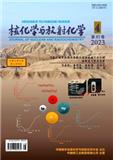
核化学与放射化学
北核,CSCD,科核,高T2
CN中文-双月刊影响因子0.618
-
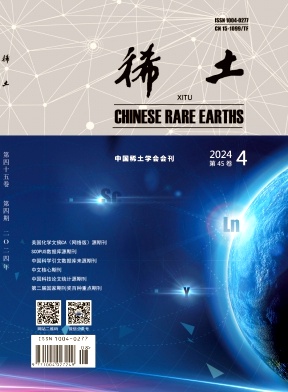
稀土
北核,科核,CSCD扩,武A-,高T2
CN中文-双月刊影响因子1.041
-
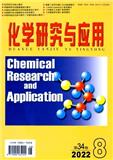
化学研究与应用
北核,科核,武B+
CN中文-月刊影响因子0.911
-
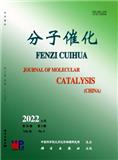
分子催化(中英文)
北核,科核,CSCD扩,武A
CN中文-双月刊影响因子1.802
-
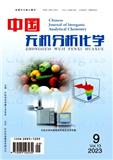
中国无机分析化学(原:中国无机分析化学文摘)
北核,高T3,CACJ-权威,武B+
CN中文-月刊影响因子1.591
-
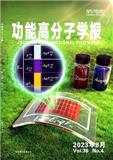
功能高分子学报
北核,CSCD,科核,高T2,武B+
CN中文-双月刊影响因子1.206
-

质谱学报
北核,CSCD,科核,高T2,EI(中国2024),武B+
CN中文-双月刊影响因子1.348
-
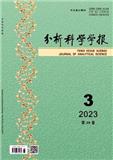
分析科学学报
北核,科核,CSCD扩,武B+
CN中文-双月刊影响因子1.227
常见问题
-
材料化学前沿杂志社官网、联系方式是什么?
材料化学前沿杂志社官网:https://www.rsc.org/journals-books-databases/about-journals/materials-chemistry-frontiers
投稿网址:https://mc.manuscriptcentral.com/matercf
投稿邮箱:MaterChemFrontiersPROD@rsc.org(官网邮箱)MaterChemFrontiersED@rsc.org(公众号信息) -
材料化学前沿杂志是核心期刊么?
材料化学前沿不是核心期刊,级别是:高T2, 是:化学分类下的
-
请问你们是材料化学前沿杂志社吗?
我们不是《材料化学前沿》杂志社。本站主要从事期刊信息展示与期刊推荐,不是任何杂志官网,直投稿件请联系杂志社。本站仅提供免费的学术指导、论文辅导、期刊投稿信息整理收集服务。
-
你们指导服务后可以保证文章被发表吗?
期刊发表的成功与否,主要取决于文章内容的质量。编辑老师会根据研究领域、创新性等多因素进行考量。我们会帮助您理解期刊的发表要求,助力提升发表几率,从而增加发表的机会。
-
晋级论文能否在报纸上发表?
在学术界,论文的发表往往被视为研究者职业发展的重要一环。晋级论文,即为了获得更高职称或学术地位而撰写的学术论文,通常需在专业期刊上发表。然而,许多人可能会问
